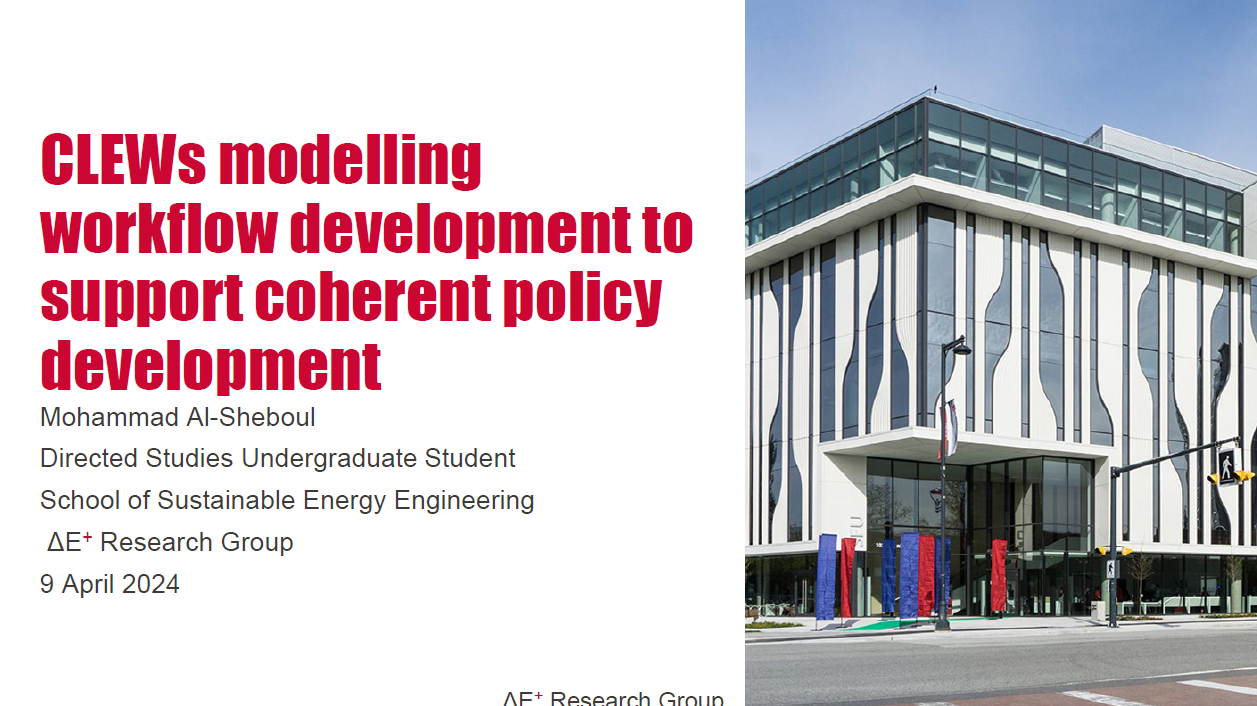CLEWs modelling workflow development to support coherent policy development
Main Article Content
Abstract
CLEWs models provide a framework for evaluating the trade-offs between environment, energy infrastructure, water usage, land usage and resource cooperation of a nation or a group of nations.. CLEWs modelling also provides a path for governments to analyse which energy systems they should invest in and how resources, such as land and water should be allocated, to provide the lowest cost for a government’s targeted climate, agricultural and energy goals.
The project documents the current best practice for creating a CLEWs model using the Open Source Energy Modelling System (OSeMOSYS). Current best practices create a CLEWs model using OSeMOSYS Global for electricity system details and GeoCLEWS for the land and water use structure. These pieces are then processed to build a CLEWs base model for any country. The project identifies areas where the workflow can be streamlined and automated using Python scripts and snakemake automation.
I applied this workflow to a model of Guyana and provide example results highlighting the benefits and usefulness of the workflow.
Article Details

This work is licensed under a Creative Commons Attribution-NonCommercial-NoDerivatives 4.0 International License.
References
K. Kuling, T. Barnes, A. Shivakumar, M. Brinkerink, and T. Niet, “Applying the open-source climate, land, energy, and water systems (CLEWs) model to Canada,” Energy Strategy Rev., vol. 44, p. 100929, Nov. 2022, doi: 10.1016/j.esr.2022.100929.
K. Kuling, Y. Saedi, T. Barnes, A. Sunder Rajan, and T. Niet, “CLEWs Global: An open source, open data Climate, Land, Energy, and Water systems model generator.” Accessed: Feb. 21, 2024. [Online]. Available: https://summit.sfu.ca/item/36641

